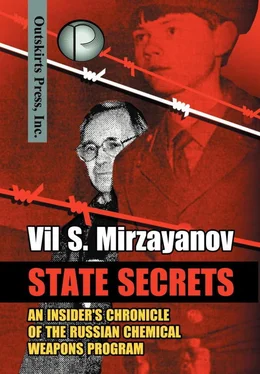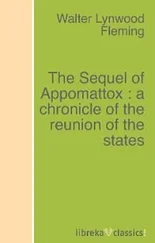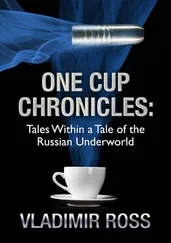If some filter with an absorbent is installed in the path of the exhaust air, this would reduce the exhaust velocity from the laboratory chamber to a level below the allowable limit, and this would be intolerable. Every exhaust hood has a chart attached to it where the date and the last measured air velocity are logged.
If these measurements are lower than the standard norms, any operations with chemical agents must be terminated. So, if filters were installed, the existing ventilation units would have to be replaced, requiring an extensive capital investment. Even in good times, the leadership of the military-chemical complex could not afford such a ‘luxury’ for their scientists.
The Soviet military-chemical complex was also running their factories without proper waste water and exhaust air treatment. In 1986, I decided to introduce my new, highly sensitive, and selective chromatographic methods for the determination of concentrations of soman and sarin at the Volgograd chemical plant, where their previous analytical procedures showed that the exhaust air was meeting permissible standards. Our first analyses of the exhaust air, conducted on February 10th 1987, were made of samples taken after the plant had been closed for maintenance and inspection for one and a half months. The sobering results showed that air containing many times the permissible level of soman was flowing out of the exhaust stacks. [55] For example, four air samples were taken from chimney stack number 606A. The first contained 10 times the maximum permissible concentration, the second 50, the third 57, and the fourth 80 times the maximum permissible concentration.
I assumed that these already poor levels would increase when the plant was operating.
In addition, the analysis of several samples taken from the tank storing Volgograd’s decontamination waste water showed that 100 to 1,000 times the maximum permissible concentration of soman remained in the water. [56] After decontamination operations, water was kept in this tank for a fixed time, in a medium of excess alkali solution, to destroy the chemical agents entirely. After that, the contents of the tank were mixed with waste effluents from the production of agricultural chemicals and were thrown outside the plant. I have to mention that for this flawed technology of sarin, V.D. Belyaev, A.V. Bruker, S.L. Varshavski, S.N. Kosolapov, L.A. Kostandov, B. P. Kuchkov, B. Ja. Libman, V.V. Pozdnev, S.N. Potapov, L.Z. Soborovski, and N.N. Yukhtin received Lenin Prize in 1961. From that time, nothing changed in relation to the production of these extremely poisonous waste waters, but it didn’t prevent others from receiving the next Lenin Prize. This time: S.V. Golubkov, I. L. Knunyants, I.V. Martynov, I.M. Milgotin, A.P. Tomilov, V.N. Topnikov, and V.M. Zimin were awarded it for production of soman.
The main reason for this mistake was a flawed cholinesterase-based analytical method of the determination of the residues of sarin and soman in presence of salts such as sodium chloride and others in this waste water. That waste water from the Volgograd plant was mixed with the waste water from the production of pesticides, and it flowed into a nearby lake, which was directly adjacent to the apartment complexes of Volgograd Industrial Association VPO “Khimprom.”
This lake was nicknamed the “White Sea”. The same defective analytical methods and irresponsible engineering practice at Volgograd Industrial Association VPO “Khimprom” resulted in the disastrous breakthrough of these waters into the Volga River in the spring of 1965. According to eyewitnesses, the entire surface of the Volga River up to Astrakhan was covered with dead fish. [57] More detailed information was published in: Vechernij Volgograd, June 1 and 3, 1993; Izvestia , December 2, 1993.
I presented these findings in full detail to Victor Petrunin, Director of GosNIIOKhT, who then calmly reminded me that Sergei Golubkov, the Deputy Minister of Chemical Industry, had once been the Volgograd factory’s chief engineer. [58] Certainly he reminded me that Golubkov was also one of Communist bosses of Volgograd – Secretary of the Volgograd Gorkom – before he was promoted to Deputy Minister.
Presenting Golubkov with this “inconvenient truth” would simply result in the loss of both our jobs, he asserted. Moreover, he warned that environmental and safety analysis at the Novocheboksary plant would reveal a similar state of affairs. I had no doubt that he was correct on both counts. Indeed, the Novocheboksary factory used a dangerously flawed GOSNIIOKhT technology for the recirculation of its waste water, a process in which it was decontaminated by ozonation and redirected for subsequent use, including decontamination procedures and the laundering of protective suits and underwear. Unfortunately, they used the cholinesterase method to monitor and control the effectiveness of this procedure, and I had already proven that it produced gross errors in the Volgograd factory. A similar ozonation procedure was used to “scrub” the air vented from the technological buildings into the surrounding environment, using the same flawed cholinesterase method for evaluating the air.
True to form, nothing came out of my attempt at prompting accountability, except for some flaming rhetoric directed back at me. GOSNIIOKhT Deputy Director Konstantin Guskov said that I had performed this research on my own initiative, and that GOSNIIOKhT did not stand behind my conclusions.
Really, it was impossible to control the fate of all the containers with chemical agents in the working laboratories. According to security regulations, every room had the right to keep up to 200 grams of chemical agents in its iron safe under the hood. The limit was up to 500 g or more for some laboratories (Departments MB, D and RP) which consumed large quantities of chemical agents. At the end of each day, scientists were supposed to lock their box and hang the key up under the hood. Taking into account that there were more than 100 laboratory rooms working with chemical agents in the GLK, this means that at least 20 kg of them were stored in this building alone, and perhaps more than 60kg altogether at GOSNIIOKhT. This is more that I had previously estimated, when I wrote the article “A Poisoned Policy” in Moscow News , [59] See Annex 3.
about than dangers posed to Moscow’s citizens by storage of chemical agents at GOSNIIOKhT. What could have happened if a major fire had broken out in the GLK and could not be contained?
There was already a huge fire in the Novocheboksary factory on April 28, 1974, during which “several tons of Substance 33 was dispersed within a 30 kilometer radius” of the storage facility for the final chemical agent of Installation 83. According to eyewitness accounts, more than 100 people were poisoned there. [60] Vladimir Shcherbak, “They hid the fact of the fire at the Factory but discovered “A method of incineration of chemical agents”, Megapolis-Express, February 17 1993; Vladimir Shcherbak, “Where to destroy the chemical weapons”, Moscow News, March 14 1993. I have no doubt about Vladimir’s credibility. For a long time he worked as the chief of the department for the development of technologies of production of the precursors of chemical agents in the Shikhany affiliate of GOSNIIOKhT. Then he became director of GOSNIIOKhT’s Novocheboksary affiliate, working on the problems of utilization of pre-cursors at the Novocheboksarsk Factory. Childhood illness rates in the areas surrounding the Novocheboksary plant are almost 40 percent higher than in other cities of the Chuvashiya Region. Birth defects near Novocheboksary run at roughly 90 percent. D. Frolov, “A Secret still remains A Secret”, Segodnya (30 December 1993); I. Nikonov, “What the reporter from Stern Magazine could not know” , Cheboksarskie Novosti (19 November 1992).
The environmental problems created by military chemical complex of Russia is also raised by Judith Perera. [61] Judith Perera, “Environment: Wounds of war – Can Russia combat the deadly legacy of chemical production?” Guardian , 23 April, 1993.
Читать дальше












